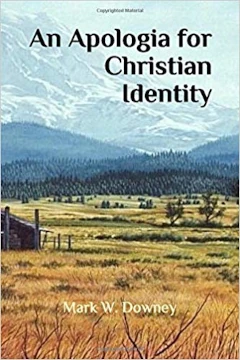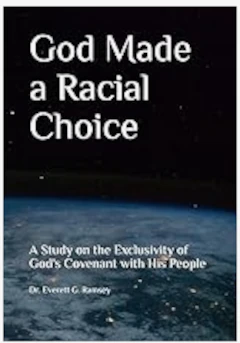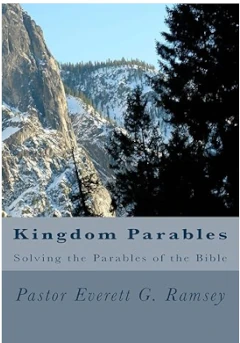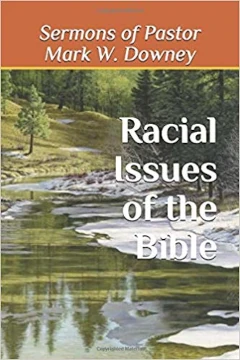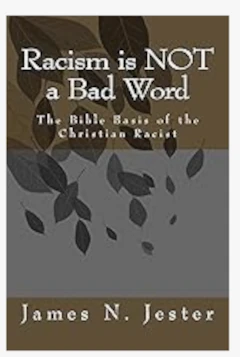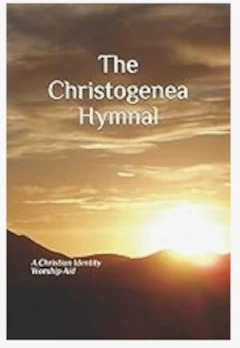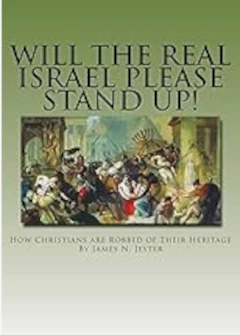Another Mistranslation
By Jim Jester
March 10, 2024
SCRIPTURE READING: Genesis 4:1-2
"And Adam knew Eve his wife; and she conceived, and bare Cain, and said, I have gotten a man from the LORD. 2 And she again bare his brother Abel. And Abel was a keeper of sheep, but Cain was a tiller of the ground.”
INTRODUCTION
In May of last year, pastor Don presented to us a list of verses that were mistranslations, and he explained what they really meant by what was said. It was quite a long list, but did not include this verse. So now, in this lesson, I shall add one more mistranslated verse; which has caused much confusion even among Identity Christians.
A COMMON MISUNDERSTOOD VERSE
And Adam knew Eve his wife; and she conceived, and bare Cain, and said, I have gotten a man from the LORD.” (Gen. 4:1)
Most people reading this will conclude, Well, that's perfectly clear, Adam was the father of Cain.” But this assumption conflicts with New Testament references to Cain. We would expect this from judeo-Christianity, but this also seems to be the same response by some in Christian Identity. Unless one can grasp the true significance of Genesis 4:1, much of the balance of Scripture will remain a mystery. To show that the Hebrew of Genesis 4:1 is indeed corrupted, I will use the following two witnesses:
The Interpreter s Bible, a twelve volume collaborative work of 36 consulting editors, plus 124 other contributors, makes the following observation on this verse, vol. 1, page 517:
Cain seems originally to have been the ancestor of the Kenites... The meaning of the name is ‘metalworker ’ or ‘smith ’ here, however, it is represented as a derivation of a word meaning ‘acquire’, ‘get ’ — one of the popular etymologies frequent in Genesis — hence the mother's words, ‘I have gotten a man from the Lord ’ (KJV) is a rendering, following the LXX and Vulg., of ’eth Yahweh, which is literally, ‘with Yahweh ’ and so unintelligible here (‘the help of’ [RSV] is not in the Hebrew). It seems probable that ’eth should be ’oth — so, ‘the mark of Yahweh’ — and that the words are a gloss…” [Dict., Gloss —facade, veneer, surface, front, show, camouflage, disguise, mask, semblance, smokescreen, false appearance]
Secondly, The Interpreter ’s One-Volume Commentary On The Bible, edited by Charles M. Laymon, makes the following comment on this passage, on page 6: ...under circumstances which are obscure, vs. 1b can scarcely be translated, still less understood. His younger brother was named Abel, which suggests the Hebrew word for breath.”
Therefore, if Genesis 4:1 is unintelligible” and can scarcely be translated, still less understood,” how can anyone prove anything by quoting it? Additionally, if the words are a gloss, where is the foundation for a premise? It should then be quite obvious that we need to look somewhere else for the answer. Fortunately, there are other sources.
I will quote a few passages which most anti-seedliners claim are Jewish,” and according to them should be discredited along with the Talmud. However, since the Torah and the Old Testament are the first volume of the Talmud, then by their line of reasoning we would have to discard the entire Old Testament from our Bibles (how absurd)! First, in the Targum called Pseudo-Jonathan, on Genesis 3:6, it identifies the angel Sammael as the serpent:
“And the woman saw Sammael, the angel of death, and she was afraid and knew that the tree was good for food, and that it was a remedy for the enlightenment of the eyes, and that the tree was to be desired to make one wise. She took of its fruit and ate and also gave it to her husband and he ate.”
And, the Aramaic Targum, on Genesis 4:1: “And Adam knew that his wife Eve had conceived from Sammael the Angel (of death) and she became pregnant and bore Cain. And he was like those on high and not like those below. And she said: ‘I have got a man from the angel of the LORD.’”
This rendition of Genesis 4:1 is interesting, for it speaks of the angel of death,” “like those on high” and like those below.” This is in harmony with John 8:23, where Jesus told the Canaanite variety of jews: "...Ye are from beneath; and I am from above: ye are of this world; I am not of this world.” Satan was on high until his fall, when he “fell like lightning”(Lk. 10:18).
We also have the Palestinian Targum on Genesis 4:1, “And Adam knew his wife Eve, who had desired the Angel; and she conceived, and bare Cain; and she said, I have acquired a man, the angel of the Lord…”
It would appear from those references that the problem with Genesis 4:1 is an omission of some of the words of the Hebrew text. Thus, Genesis 4:1 with the potentially needed words (in italics) from the Targum of Jonathan so it will make some sense:
And Adam knew his wife Eve, who was pregnant by Sammael, and she conceived and bare Cain, and he was like the heavenly beings, and not like earthly beings, and she said, I have gotten a man from the angel of the Lord.”
While many do not like the source of the Targums, still they must concede that this evidence brings the Scriptures into context, and many Hebrew scholars recognize this; including Clark’s Commentary, volume 1, page 58, and he suggests a contextual problem with Genesis 4:1, as opposed to I John 3:12, and knowing that the meaning of the Greek word wicked” in this instance means Satan,” says the following: ...Unless she had been under Divine inspiration she could not have called her son (even supposing him to be the promised seed) Jehovah; and that she was not under such an influence her mistake sufficiently proves, for Cain, so far from being the Messiah, was of the wicked one; I John 3:12…”
Therefore, Adam could not have been the father of Cain as Genesis 4:1 seems to indicate in most translations.
SUPPORTING EVIDENCE
Now, if we were to lay aside all the previous information found in the Interpreter ’s Bible, the Interpreter’s Commentary, and the three Targums (as seen above); left only as we have it from the Masoretic text, Genesis 4:1 should have been divided into two sentences. The verse would read: “Later, Adam knew Eve his wife. She conceived, and bare Cain and said, I have gotten a man from the LORD.”Most other translations have used a comma (shame on them). The purpose here, is to keep the context of what we know from the previous chapter; that Eve was already pregnant by the serpent, before Adam knew his wife again. This being the case, the chapter division is incorrect; which originally there were no chapters or verses or punctuation in the Bible. Verse 1 and 2a should have been at the end of chapter 3. Chapter 4 should have begun with the words from (v. 2b), “Now Abel was a keeper of sheep, but Cain was a tiller of the ground.” This would have started a new train of thought following what we already knew from the previous chapter.
In verse 2a, there is another point to be covered: “And she again bare his brother Abel.”Notice that the preceding phrase, “Adam knew his wife” is not there. It simply says she “again” bare Abel. This is different from other such verses as follows in this chapter (4):
Verse 17, “And Cain knew his wife; and she conceived, and bare Enoch…”
Verse 25, “And Adam knew his wife again; and she bare a son, and called his name Seth…”
The reason it is different in verse 2, “she again bare,” is because she was baring twins. At any rate, Eve was certainly grateful to God for a successful delivery, as some translations render it, “with the help of the Lord.”
Eve knew she had transgressed God’s command and so confessed, “The serpent beguiled me, and I did eat.” (Gen. 3:13) But she could not be absolutely sure of which child (of the two) she was baring first. In time, it became obvious who was who. Perhaps she hoped she would bare the future Messiah, but there was no way to know at this point — but she was thankful. The statement, “I have gotten a man from the LORD” does not necessarily prove that the ones born into the world are of proper seed.
That Eve was pregnant in chapter 3 is seen by the words: “Her seed” (Gen. 3:15), “thy conception” (v. 16), and “mother of all living” (v. 20). This is conclusive proof of why the first verse and a half in the alleged chapter 4 actually belongs with chapter 3. Adam was not the father of Cain.
Another supporting piece of evidence is that Cain’s genealogy is not only separate from Adam’s genealogy, but is quite different in tenor. It does not record the amount of time that has passed in order to note births and deaths. In contrast, Adam’s genealogy records the time passed between the patriarchs. Further, Cain’s name does not appear in any of Adam’s genealogy. Genesis 5:3 tells us that Seth was of Adam's likeness and image,” words which were never used of Cain. Cain simply was not Adam’s son genetically, although Adam adopted him legally. This soon led to problems later; as outlined in chapter 4.
NEW TESTAMENT
The New Testament makes three references to Cain’s wickedness (Heb. 11:4; I Jn. 3:12; Jud. 1:11), including the First Epistle of John, where the Greek emphatically says he was “of that wicked one” (a known reference to Satan, 7 times in the N.T.; with the Article). Those who deny Two-Seedline doctrine evidently do not realize the nefarious implications of their belief. According to the law of “kind after kind,” by making Cain the full brother of Abel and Seth, they imply our Lord was in the same image as Cain; implying also that Jesus was a congenital liar and murderer. And, if this were true, it would then make our Lord equally responsible for all the murders of the prophets since Abel.
Also, if Cain and our Lord had been in the same image, as the anti-seedliners imply, then our Savior would be in the same category as a fugitive” and a vagabond,” for Cain was cursed to be both a fugitive and a vagabond. Who are the people living in exile” in all the countries of the world with no place to call home? Historically, who are the vagabonds of the world? We know the answer (jews). This alone should prove, beyond a doubt, that Cain was not a full-blooded brother to Abel or Seth, therefore, he was not in the image of Adam.
FAMILY TREES
One thing we learn from the New Testament that we can apply to Cain is found in what our Lord said in Matthew 7:
“Beware of false prophets, which come to you in sheep’s clothing, but inwardly they are ravening wolves. 16 Ye shall know them by their fruits. Do men gather grapes of thorns, or figs of thistles? 17 Even so every good tree bringeth forth good fruit; but a corrupt tree bringeth forth evil fruit. 18 A good tree cannot bring forth evil fruit, neither can a corrupt tree bring forth good fruit. 19 Every tree that bringeth not forth good fruit is hewn down, and cast into the fire. 20 Wherefore by their fruits ye shall know them.” (Matt. 7:15-20)
If the “Tree of Life” represents a race of people, and if the law of God is the way to the “Tree of Life,” then the “Tree of the Knowledge of Good and Evil” is also a race, and existing contrary to that law they shall be rooted up, because they were not planted by God. The fruit does not have a choice; it is good or evil only by the tree from which it comes. If Cain were truly the son of Adam, then he could not have been a devil, as a good tree cannot produce bad fruit. But Adam, having accepted Eve in her sin, also sinned himself, and accepted Cain as his lawful son while he was not his natural son. For that reason, Cain's sacrifice could not be accepted. God challenged him to do well while knowing that he could not do well, as the sin which lieth at the door” (door of the womb) was the very circumstance of his birth. For the same reason, a devil could lay claim to all the kingdoms of the world, which was supposed to belong to Adam. I have often summed this up with the little rhyme, “When Adam did fall, sin fell upon all.”
MISHANDLING OF SACRED TEXT
Many Christians might wonder, “How in the world did the Bible get into such a mess with so many mistranslations; including this verse?” I would say, “Someone has a motivation to hide certain truths.”
Christians today are quite ignorant of what Jesus and His followers relied upon for Scripture. At the time of Christ the Hebrew language of the Patriarchs had faded from use. That part of the world had become Hellenized and therefore spoke Greek. The problem of preserving Scripture presented itself about the 3rd century BC when 70 translators began their work. The legend of the 70 was thus named the “Septuagint” (in Latin) and abbreviated by the Roman numerals LXX. The fact that Jesus and the writers of the New Testament quoted from the Septuagint, gives it the credibility of inspiration for the Old Testament rendered in Greek rather than Hebrew.
The original Hebrew O.T. and the subsequent translation into Greek were not written by jews. They were written by racially pure white scholars from the tribes of Israel. Jews have never been Judahites or Israelites. The Jews” (as they're called now) at the time of Christ, were mongrels that returned from Babylon; as well as mongrels of Esau (Edomites), were absorbed into the Maccabean society, and like all other residents, were lumped together with the Judahites and therefore called “Jews.” This is the convoluted version that has been handed down by the authors of confusion in what is known as the Masoretic Text.
At the time of Christ the majority of people spoke Greek (and some Aramaic), not Hebrew. The N.T. writers showed their favor of the LXXby using it when quoting the O.T. Because of the increasing use and acceptance of the LXX among Christians, the jews began to renounce it and moved towards a number of other Greek versions. A new translation was produced around 130AD by Aquila, a disciple of Rabbi Akiba.Aquila was the son of Emperor Hadrian's sister, born a pagan, converted to Christianity, but was excommunicated for astrology and magic and ended up converting to judaism, and thus under their employ as a translator. It was an extremely literal translation, and communicated poorly, but it gained wide acceptance among the jews. The jews were so upset over the new Christian heresy that they no longer endorsed the LXX that they had accepted for 400 years; a major step for judaism to take.
These jewish rabbis, known as Masoretes, conspired from about 450 to 1000AD, reaching their apex between the 7th and 9th centuries. The oldest known copy of the Masoretic text is from 925AD. The oldest known copy of the LXX is from 325AD and was considered by most Judeans (not jews) to be the inspired Word of God — a difference of some 600 years and a difference between white and jewish translators.
During this thousand year project, the jews collected or bought (regardless of price) any and all Hebrew manuscripts, under the guise of being Hebraic scholars; even though they had no right to claim an Israelite heritage. They undertook this work under the pretext of streamlining the variant copies of the O.T., and of course, it was under their rules and supervision of editing according to their agenda, not the Christians. When this reconstruction was completed, all Hebrew copies not in conformity with the Masoretic text were destroyed or mysteriously disappeared. Their protocol for the next thousand years was to be the preservation of their text. The Roman church played this same game of tampering, with their Textus Receptus, i.e., the received text; “received” meaning what they agreed upon. In both cases of jewish and catholic word manipulation, the commoners of white Christianity were not consulted, but rather targeted.
From a 1999 publication called The Faith Once Delivered by Russell Harris, more light is shed on this jewish collusion: However, it turns out that the undertaking involved alterations of a much more fundamental nature. Indeed, upon the rubble of Ancient Hebrew, the Masorete erected a significantly different language of much greater complexity; a language which appears to have been created for the express purpose of facilitating wholesale alteration of the manuscripts of Old Covenant Scripture. The Masorete then translated the Ancient Hebrew manuscripts of Scripture into the new language, in the process taking great liberties.”
Adam Clarke, an 18th century Anglican scholar, makes it clear that the work of the Masoretes is, in reality, a commentary which has been integrated into the body of Scripture. Moreover, Clarke points out that the Hebrew of the Masoretic Text (known as: Masoretic Hebrew or Modern Hebrew or Herodian Script) is quite different from the Hebrew of the patriarchs (known as: Ancient Hebrew or Paleo Hebrew) in which the Old Testament was originally written. In the Preface of his commentary, published in 1810, Clarke writes:
The Masoretes were the most extensive Jewish commentators which that nation could ever boast. The system of punctuation, probably invented by them, is a continual gloss [In classical Greek ‘gloss ’ meant a language. In the course of time it was used to designate first a word of the text which needed some explanation, and later the explanation or addition itself.]The vowel points alone add whole conjugations [a class of verbs having similar inflected forms] to the language. This system is one of the most artificial, particular, and extensive comments ever written on the word of God; for there is not one word in the Bible that is not the subject of a particular gloss through its influence…
“Unless the Masoretic Text is a complete fabrication; i.e., a translation from the Septuagint into Masoretic Hebrew, one must assume that the Masorete based his work on Ancient Hebrew manuscripts. Inasmuch as the Masorete worked in the Christian era; apparently starting about the 5th century, and did not complete his Masoretic Text until the 9th or 10th century, it would appear that Ancient Hebrew manuscripts were in existence as late as the 5th century, and likely until the 10th century. How, then, can it be that no specimens of the Ancient Hebrew manuscripts survived to the present day?
“The disappearance of Ancient Hebrew manuscripts makes it impossible to determine precisely the extent of alterations made by the Masoretes. Unquestionably, the Septuagint preserves the sense of the Ancient Hebrew; however, being a translation, the Septuagint cannot be used to effect a precise word-for-word reconstruction of the vanished Ancient Hebrew text.
“It may be impossible to establish with precision the epoch at which the church first came into possession of the Masoretic Text. However, in all probability, this did not occur until the 15th century, when the entire Masoretic Text first became available in printed form, being published in 1488 A.D., by Jews in Soncino, Italy. Indeed, the argument that the church adopted the Masoretic Text prior to its publication in the 15th century appears untenable. One is forced to the conclusion that, until the advent of the printing press, the services of the Masoretes were indispensable to preservation of the Masoretic Text…
“Thus did the Jew gain privileged access into the very heart of Christendom, from which realm he had so long by the providence of God been excluded. Through embrace of the Masoretic Text, the Church ensured the Jew a permanent role in Christendom, namely, that of ultimate authority regarding the Masoretic Hebrew language, and final arbiter regarding interpretation of the Masoretic Text.” (Clarke)
By the way, it was also during this period of time when all the “Y” variant of words were formulated with the Tetragrammaton (YHWH), giving us words such as: Yahweh, Yehovah or Jehovah, Yahshua, Yeshua, etc., so-called “sacred names;” none of which we should use because they are based upon a false premise. That false premise being, that this new (at the time) Masoretic Hebrew (also called Modern Hebrew), which replaced Ancient Hebrew (also called Paleo-Hebrew), was to be pronounced the same as the Ancient Hebrew, i.e., with the “Y” sound. What kind of trickery is this? A new language is formulated by the jews, yet it is to be pronounced the same as the old language? Does that make sense? No, it’s a lie. The older, extinct Ancient Hebrew was very similar to Greek and had the “J” sound — there must be a consonant. Thus, even the newer YHWH was pronounced “Ge-sus.” All “Y” sounds are typical of satanic “whispers” because they lack the consonant. [More on this at another time.]
CONCLUSION
With this enlightenment on Genesis 4:1, everything else falls into its proper place, and all the supporting Scriptures for Two Seedline doctrine fit together quite well. There can be little reasonable doubt as to the correct meaning of all the interlocking passages to Genesis 3:15. The Protevangelium 10:1-7 now matches with the Bible when it says (Joseph speaking);
“And when her sixth month was come, Joseph returned from his building houses abroad, which was his trade, and entering into the house, found the Virgin grown big: 2 Then smiting upon his face, he said, With what face can I look up to the Lord my God? or, what shall I say concerning this young woman? 3 For I received her a Virgin out of the temple of the Lord my God and have not preserved her such! 4 Who has thus deceived me? Who has committed this evil in my house, and seducing the Virgin from me, hath defiled her? 5 Is not the history of Adam exactly accomplished in me? 6 For in the very instant of his glory, the serpent came and found Eve alone, and seduced her. 7 Just after the same manner it has happened to me…” [emphasis mine]
Josephus Wars 2:8:2 becomes more clear: For there are three philosophical sects among the Judeans. The followers of the first of whom are the Pharisees; of the second the Sadducees; and the third sect, who pretends to a severer discipline, are called Essenes. These last are Judah by birth, and seem to have a greater affection for one another than the other sects have.”
From this, it would appear that of these three sects mentioned, only the Essenes could claim to be pure blooded Israelites of the Tribe of Judah. That is why Josephus did not mention the Pharisees and Sadducees as being jews by birth. The Bible is correct when it says in Revelation 2:9 and 3:9; "…and I know the blasphemy of them which say they are Jews [Judah], and are not, but are the synagogue of Satan... Behold, I will make them of the synagogue of Satan, which say they are Jews [Judah], and are not, but do lie…”
Not only did Jesus accuse the jews of lying about their lineage, but He also told them plainly they were not of his sheepfold; “But ye believe not, because ye are not my sheep, as I said unto you. My sheep hear my voice and I know them, and they follow me.”(Jn. 10:26-27)
John 8:38, “I speak of what I have seen with my Father, and you do what you have heard from your father.”
Note there are two different fathers here. Assuming that Adam is the father of Cain, if Jesus told His adversaries, the Canaanite variety of jews, that they were doing the work of their father, Cain; then that would also be the same work of Jesus’ father, Adam! Now that's a conflict.
John 8:44, “Ye are of your father the devil, and the lusts of your father ye will do.”
If Cain was of Adam's seed, and yet a devil” according to Jesus, the law of kind after kind” insists that Adam, Abel and Seth were devils too. Now that's another conflict.
If Adam is the genetic father of Cain, then we are all the same people and universalism is true; there is no cursed race; there is no chosen race; and God's Covenant would be irrelevant. Now this is a blasphemous conflict!
John chapter 8 stands in conflict with Genesis 4:1 (as we have it), and the only way to resolve the conflict is to admit that there is a problem with Genesis 4:1, and that problem is certainly apparent. If Adam is the father of Cain, then where is the harmony of the Scriptures? True Doctrine is always in harmony with all other Scriptures. If not, it is false. The belief that Adam was the genetic father of Cain does not qualify as Bible doctrine.
Context means the entire Bible, not just a small passage. Disagreement with the entire context suggests scribal or translation problems. Sometimes, context must even take precedence over the Hebrew or Greek letter. Undoubtedly, this is true of our mistranslated verse, Genesis 4:1.



